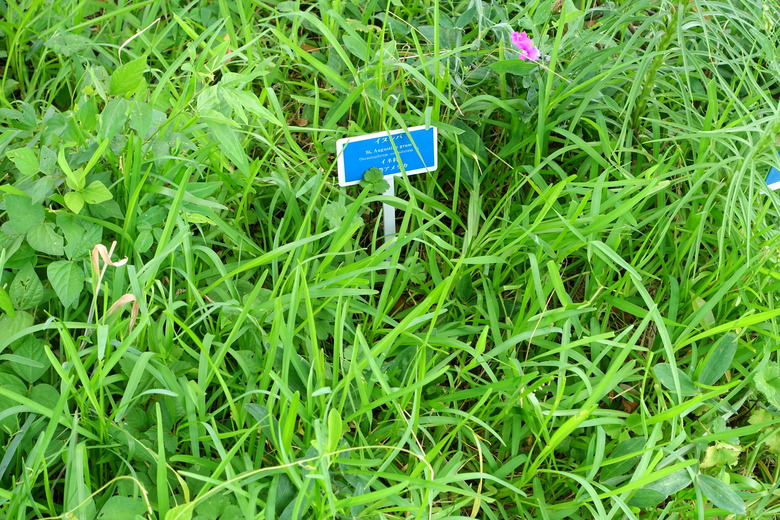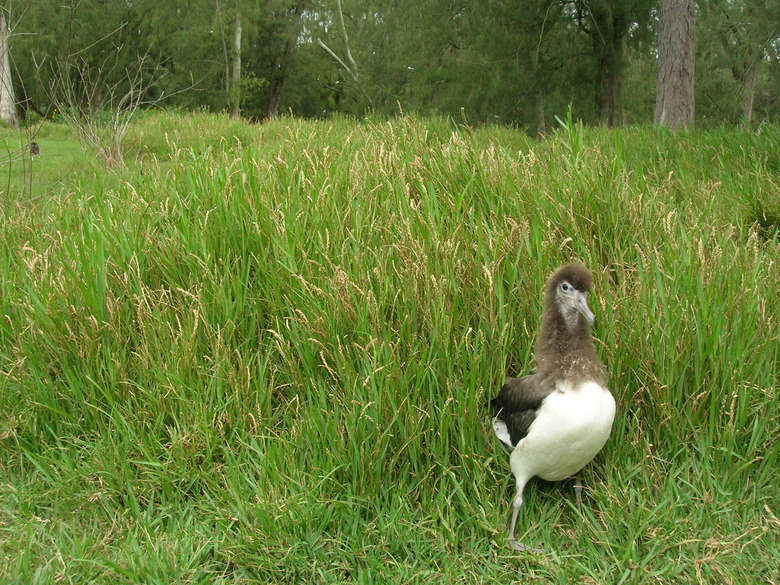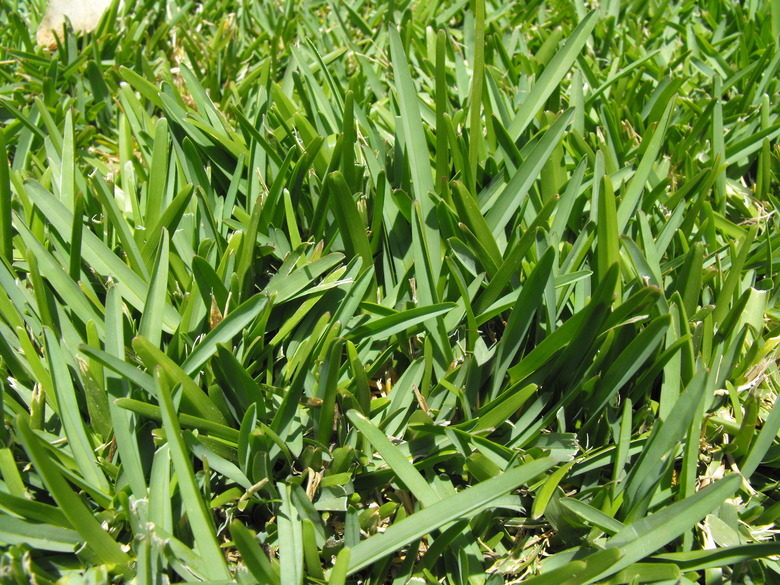How To Reseed St. Augustine Grass
All lawns, regardless of the grass variety, require rejuvenation over time. If your St. Augustine lawn (Stenotaphrum secundatum, zones 8 to 10) has developed bare spots, thatch or brown patches, it's time for some lawn repair.
Usually, this type of grass is renovated using sod or stolons, but some cultivars might be propagated via seed, although this is not common.
Seed, Sod or Stolon?
**St. Augustine grass, a warm-season grass, is almost always propagated vegetatively,** meaning through creeping stolons that emerge from St. Augustine grass plugs or St. Augustine sod. Some experts, among them the University of Florida, state that it is never propagated via seed and that seed is not even available to consumers or growers to purchase.
Texas A&M Agrilife Extension offers more information regarding the possibilities of using seed to propagate St. Augustine grass, reporting that some strains can be grown from grass seed.
**Most St. Augustine grass lawns, whether new lawns or existing lawns, are easily planted or rejuvenated using sprigs, plugs or sod.** If you can find St. Augustine grass seed for purchase, however, here's how to overseed this type of turfgrass.
Overseeding Your St. Augustine Lawn
Before overseeding, you have a few chores to do.
Get a Soil Test
First, get a soil test to determine your soil type and if you need to adjust or add nutrients, particularly pH values. Your local county extension office can help with resources for getting your soil tested. Treat your lawn with whatever amendments are suggested given the results of the test.
Till the Soil
Seeds need a warm, cozy, soft place to germinate. So you'll need to dig or till the areas you plan to reseed to a depth of about 3 to 4 inches.
Be careful, though—you want to maintain some existing clods that contain roots or stolons, and you also want to avoid leaving large mounds.
Once you are done, rake the soil smooth. Your final goal here is to ensure seed-to-soil contact.
Tip
You might use what is called a "vertical" mower, also called a thatching machine or a coring machine, which breaks up clumps to ensure a smooth enough surface on which to broadcast the seed.
Broadcast the Seed
Broadcasting the seed can be tricky because you are just reseeding areas that are bare or thin, and if you apply too much seed to bare soil, the emerging grass blades compete with one another, and then no one wins. So read the directions on your St. Augustine grass seed and apply it at the rate recommended.
Use a spreader if the area is somewhat large. The recommended rate is typically to plant the seed at 1/3 to 1/2 pound of PLS (pure, live seed) per 1,000 square feet. Translated, that means 2-inch sod plugs planted every 1 foot.
Tip
Warm-season grass seed is very small. Consider mixing the seed with a substance that will dilute it, such as organic fertilizer or sand.
Avoid the temptation to bury the seed. These tiny seeds may not emerge if they are buried. Just rake the seed in and apply a thin coating of mulch.
Water the Seed
Don't let the seed dry out. It needs to remain moist for several weeks after planting. If you live in a particularly dry climate, this may mean daily spritzing. Once the seedlings start to spread, they are established, and you can then water only when the soil is dry or the conditions are very dry.
Fertilize the Young Seedlings
After the seedlings emerge, apply a "starter" fertilizer or one high in phosphorus.
St. Augustine Lawn Care Over the Seasons
Clemson University defines St. Augustine grass as a "high-maintenance" turfgrass. Annual lawn care requires regular fertilizer, proper mowing and protection from weeds.
Fertilizing Your Lawn
Lawns are hungry, and St. Augustine grass lawns are no exception. In the first three months after planting, apply a high-nitrogen fertilizer at a rate of 1 pound per 1,000 square feet. After that, fertilize in the spring and mid-summer, according to the manufacturer's directions.
Mowing Your Lawn
The height at which you maintain your lawn depends on the sun. In full sun, maintain a height of about 1 inch. As the shade increases, the height of the grass blades should increase, so a height of 3 inches is appropriate for dense shade.
Weeding Your Lawn
If your lawn has been weakened by environmental conditions or insects, it may be prone to weeds, either grassy or broadleaved types. Use hormone herbicides in early spring to combat cool-season weeds that become established while the St. Augustine grass is dormant.
For annual weeds, use pre-emergent herbicides.


